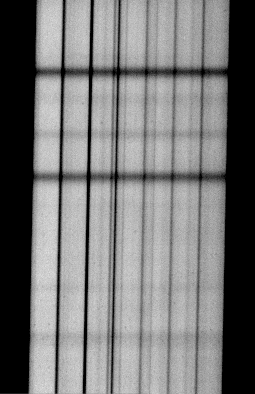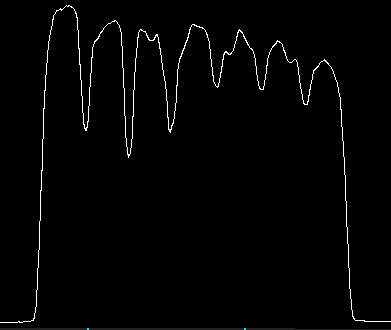
| You are in: Instruments > bHROS > Performance and Use > Components > Fibers and Slicers |
 |
Fibers and Slicers |
The fiber input of bHROS is at the Cassegrain focus of the telescope, where the f/16 beam results in an image scale of 621 µm/arcsec. The fibers, with microlenses, are mounted in a cassette which can be placed into the focal plane of the telescope by GMOS-South (as if it were a MOS mask or IFU). This permits guiding with the GMOS-S OIWFS. The fiber microlenses are positioned to within 20 µm (0".032, or 1/20 of the median seeing) with respect to a frame of reference defined by the GMOS-S OIWFS.
There are two modes of operation with bHROS, outlined below:
Three image slicers of a Bowen-Walraven design (giving high throughput) are used to produce slices 0.14 arcsec wide in the spectral direction to achieve a spectral resolution of R=150,000. Two image slicers are used for the object/sky mode and produce five slices from their 0.7 arcsec fibers, while the object-only image slicer produces seven slices from its 0.9 arcsec diameter fiber. There is sufficient space between orders, and between the object and sky fibers in object/sky mode, to allow up to 8X binning in the spatial direction. An unprocessed image of the order produced in the single fiber mode is shown below along with an example cut across the order.


Owing to the wavelength dependent slit rotation introduced by pre-cross dispersing the echelle, a goniometer (slicer rotation mechanism) is used to ensure a vertical slit at each user-specified central wavelength. This is especially important given the very long (up to 220 pixels in object-only mode) slit produced by the slicer.
Last update September 1, 2005; Steven Margheim